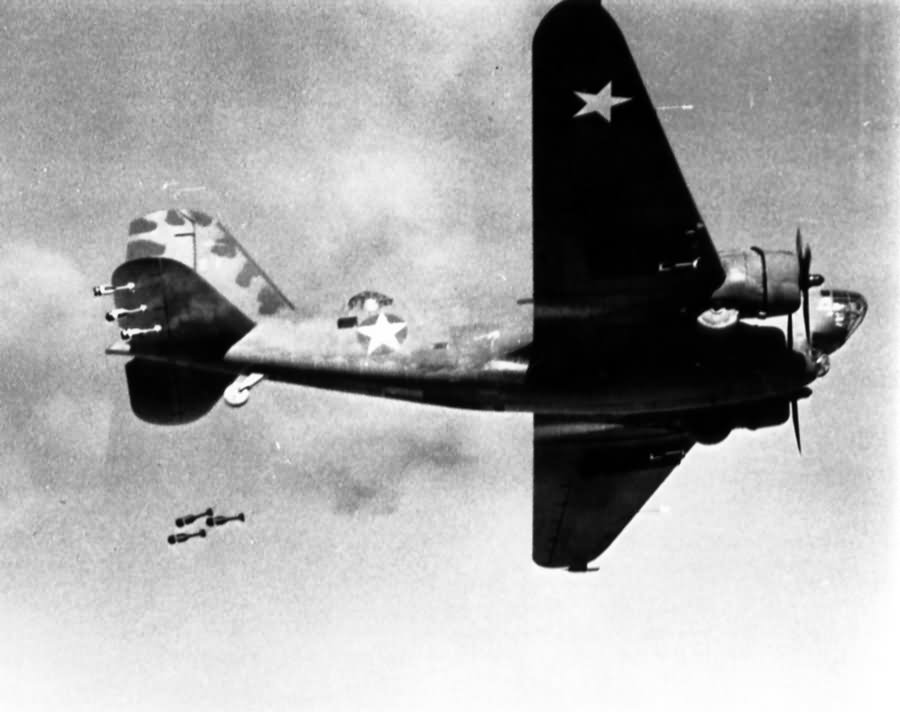The introduction of the retrobomb in mid-1943 significantly enhanced the anti-submarine warfare (ASW) capabilities of aircraft like the B-18 Bolo and the PBY Catalina. These retrobombs were a key innovation, designed to improve the accuracy and effectiveness of attacks against submerged submarines by utilizing a unique deployment method that allowed bombs to be dropped vertically onto a target after coming to a mid-air stop.
Retrobomb Deployment System:
Mechanism:
- The retrobombs were fitted with rockets that, when fired, propelled the bombs backwards off their launching rails, effectively bringing them to a mid-air stop relative to the moving aircraft. This stopping action allowed the bombs to fall vertically into the water, directly over the position of a detected submarine, rather than following a forward trajectory that could cause them to miss the target.
Aircraft Compatibility:
- B-18 Bolo: The B-18 could carry up to 16 retrobombs, with eight mounted under each wing on specially designed launching rails.
- PBY Catalina: The PBY had a greater capacity, carrying 24 retrobombs, with 12 mounted under each wing.
Launch Sequence:
- The bombs were launched in salvos of eight, with four bombs released from each wing simultaneously. This was followed by a second salvo of eight bombs (again, four from each wing) half a second later. For the PBY, this process continued with a third salvo, making the deployment particularly dense and effective.
- The launchers were arranged in groups of three, each set at slightly different angles to ensure that the bombs from each salvo would hit the water in a line approximately 100 feet long, perpendicular to the aircraft’s flight path. The half-second interval between salvos resulted in 90-foot spacing between these lines, maximizing the coverage area over the suspected submarine’s position.
Operational Use:
Tracking and Targeting:
- Prior to initiating an attack, the crew would track the submerged submarine using smoke markers. This allowed the aircraft to position itself for an optimal attack run, ideally along the length of the submarine. The goal was to ensure that at least two bombs would explode directly over the submarine, increasing the chances of a successful strike.
MAD (Magnetic Anomaly Detection):
- Of the 122 B-18B aircraft, 79 were equipped with Mk IV magnetic anomaly detection (MAD) equipment, which was installed in a tail boom. This MAD system allowed the crew to detect the slight magnetic disturbances caused by the metal hull of a submerged submarine, providing a precise location for the retrobomb attack.
